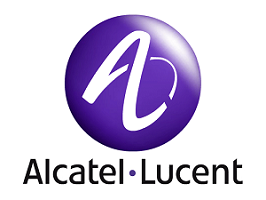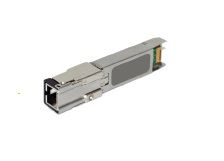Alcatel-Lucent Takes New Cable Angle

The reorganization of Alcatel-Lucent, dubbed “The Shift Plan,” includes a heavier emphasis on cable, and the Paris-based vendor on Wednesday revealed a key piece of its product strategy alongside word of a win with a major U.S. cable operator.
As expected, Alcatel-Lucent launched a line of EPON gear tailored for cable that bakes in DOCSIS Provisioning of EPON (DPoE), a CableLabs interoperability spec that enables the equipment to speak the provisioning and backoffice language of DOCSIS. This essentially allows cable operators to deploy high-capacity, fiber-based EPON to serve business customers, while preserving the DOCSIS backend systems already used for high-speed Internet and voice services that run on an MSO’s hybrid fiber/coax plant.
“From a network management and provisioning perspective, an EPON customer will be indistinguishable from a DOCSIS customer” when DPoE is employed, explained Jay Fausch, senior direct of Americas customer marketing for Alcatel-Lucent. “EPON is about providing them [cable operators] with a vehicle to move up market.”
Stefaan Vanhastel, marketing director for fixed networks at Alcatel-Lucent, said the company has already inked EPON deals with two major North American cable operators. Bright House Networks, a cable operator that is already deploying EPON extensively in support of its business services strategy, was identified as one, while the other remains unnamed.
On the network side, Alcatel-Lucent’s EPON system for MSOs is comprised of the vendor’s 7360 ISAM FX, which can support 1 Gbps EPON and 10 Gbps EPON linecards. The customer premises side of the equation includes a 10G EPON Optical Network Unit as well as EPON Small Form-factor Pluggable ONU device (pictured at left) that can be swapped into a legacy GigE transceiver and transform the device into an EPON ONU without having to replace the entire customer-side business router.

U.S. cable operators are largely using EPON for business services, but the technology could also be used in residential scenarios in limited situations where fiber is pulled all the way to the home.
“Bright House Networks has been an early champion of PON technologies in general, and EPON specifically, as our default last-mile fiber connectivity solution supporting all of our MetroE and cell backhaul services,” Craig Cowden, SVP of network engineering/operations and enterprise solutions at Bright House, said in a statement. “Compared with competing alternatives, EPON has clear advantages in capital efficiency, vendor interoperability, bandwidth scalability and standardized provisioning.”
Multichannel Newsletter
The smarter way to stay on top of the multichannel video marketplace. Sign up below.
Alcatel-Lucent’s new cable play will face stiff competition from CommScope, Huawei, Sumitomo, ZTE, CTDI and Finisar, which have developed EPON products that have already been granted DPoE 1.0 qualification from CableLabs.
But it will help Alcatel-Lucent to broaden and reinforce its cable strategy. Among other MSO customer examples, Time Warner Cable is using AlcaLu’s Velocix content delivery platform technology to help power its TWC TV apps. Cox Communications uses using the company’s 7750 server router for business services, and Shaw Communications of Canada has tapped Alcatel-Lucent for optical transport gear. Liberty Global, Ziggo (the Netherlands), ZON (Portugal) and TeleCable (Spain) are among Alcatel-Lucent’s other announced cable operator vendors.
Alcatel-Lucent does not break out what percentage of revenues is derived from cable customers, but it’s likely not a huge contributor when compared to the rest of its telecom business. Vendor data shows that it has a total of 10 cable operator customers versus more than 140 PON FTTP customers.
Alcatel-Lucent revealed details of The Shift Plan earlier this month, announcing it would eliminate 10,000 jobs worldwide by the end of 2015 as part of a belt-tightening initiative that aims to cut fixed costs by €1 billion (US$1.35 billion) and return the vendor to profitability.
